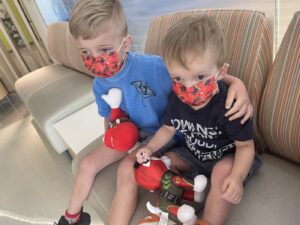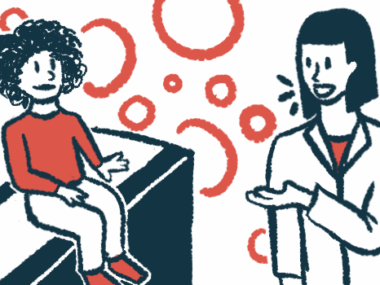How we’re navigating day-to-day life with a liver disease
We've learned to watch for our son's various symptoms of Alagille syndrome
Written by |

Raising children means daily challenges. One day they’re the sweetest kids in the world; the next, you wonder how someone so small could bring forth such an intense attitude. There are ups. There are downs. It all comes with the territory of raising a family. And with a child with Alagille syndrome, I’ve had to learn to navigate a few more issues in our day-to-day life.
My son Finley, who was diagnosed with Alagille syndrome at 4 months old, is nearing his fourth birthday. He’s an intelligent, kind, rambunctious little guy. Don’t let his size fool you: I promise he can be the loudest in the room if he wants. At his age, it’s a roll of the dice to predict what attitude you’re going to get when. He knows how to keep his parents on their toes.
As his parents, we need to keep an eye out for a number of things. Fortunately for us, the symptoms of Finley’s Alagille syndrome have been managed well by medication and nutrition. I feel fortunate every day that we’ve recently been able to see our doctors less frequently — a luxury I know doesn’t exist for all families raising a child with Alagille.
Symptoms we must observe
While Finley may be in a generally good position with his health, that doesn’t mean we get to sit back. I notice every time his skin and eyes are showing more signs of jaundice. That ebbs and flows. Some days I can barely notice anything, while other days it can be jarring. On those days I have to brace myself for what may be coming. Up to this point, it hasn’t led to anything serious. But it easily could.
We’ve become experts at identifying when Finley is experiencing increased itchiness from his liver disease. Thankfully, he’s also getting better at communicating what he’s feeling regarding his itch. He knows he can ask for the “extra” itch medicine, hydroxyzine, at bedtime. Redirecting his attention still works well when I see him scratching with more ferocity than normal. Watching for his itch has become a built-in focus for my daily routine raising Finley.
Not to get graphic, but anyone raising a child with liver disease knows how much attention gets paid to bowel movements. If the color is headed in the wrong direction, meaning toward gray or lighter, alarm bells start to go off. Thankfully, we haven’t seen anything like that since before he was diagnosed. But when anyone sees a color in a bowel movement that’s different from the norm, it gives them pause and causes them to worry about what color the next one will be.
We’ve instructed his day care staff members to inform us if they see anything out of the norm with his health or behavior. That’s produced a few funny moments when Finley has enjoyed a treat with a lot of food coloring, which gets into his bowel movements. The caring staff members have shared such occasions with us just to make sure we think everything’s OK, even though we’re looking for gray — not green from a bowl of rainbow sherbet.
Finely is my second child. My oldest, Jackson, is 6 years old and in first grade. I thought I’d be prepared for my second child when it came to the day-to-day issues. Thankfully, that proved true. Jackson, another amazing kid with a creativity you wouldn’t believe, laid the groundwork for my parenting. Finley has added a wrinkle as he now helps manage his Alagille syndrome. I’m thankful to them both for helping shape me into the man I am — certainly not perfect, but trying my best to raise them.
Alagille syndrome is a daily part of our lives. It’s a character living in the background, one that reminds us of its presence at different points throughout the day: when giving Finley his medicine in the morning and night, when noticing a worrying health sign, when scheduling his next doctor appointment six months in advance so he’ll get in with the gastrointestinal doctor I want him to see. It adds up. It weighs on me. But it becomes routine, and it does get easier.
Parenting is hard. Raising a child with a rare disease brings extra challenges. But I’m who I am now because of this journey. I’m proud of my boys for their strength, bond, and compassion. I’m learning from them every day, as I hope they’re learning from me. We’ll all continue to navigate the ups and downs of life as a family unit.
Note: Liver Disease News is strictly a news and information website about the disease. It does not provide medical advice, diagnosis, or treatment. This content is not intended to be a substitute for professional medical advice, diagnosis, or treatment. Always seek the advice of your physician or other qualified health provider with any questions you may have regarding a medical condition. Never disregard professional medical advice or delay in seeking it because of something you have read on this website. The opinions expressed in this column are not those of Liver Disease News or its parent company, Bionews, and are intended to spark discussion about issues pertaining to liver disease.









Leave a comment
Fill in the required fields to post. Your email address will not be published.